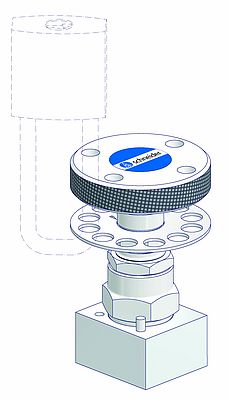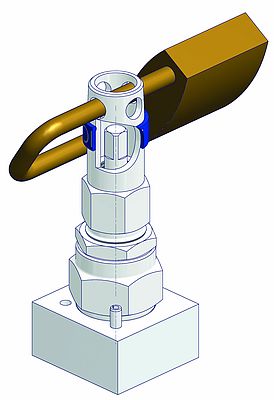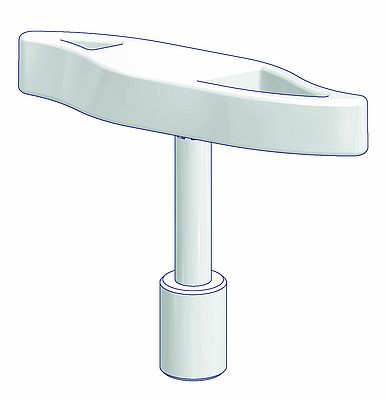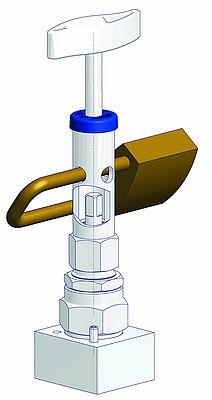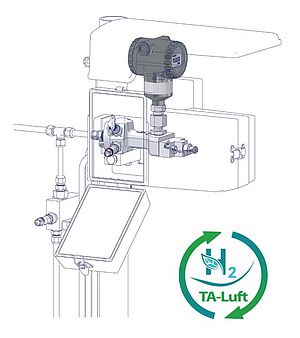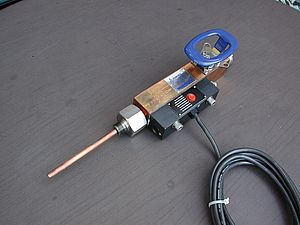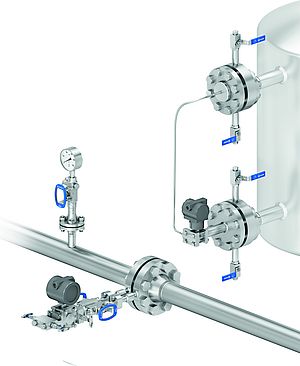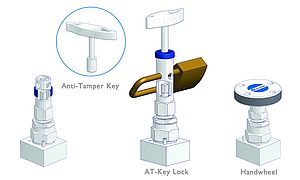The Standard Design of the Anti-Tamper Valve Head Unit is equipped with a bore and matching AT-Key. The valve can only be operated using this special key. The operator can also lock the bore using a padlock in order to prevent the insertion of the AT-Key. This makes it impossible to operate the valve. It can be securely locked in any position - closed, partially open or fully open.
Valves boasting the AT-Key Lock Design are operated using the built-in T Handle Key which can be retracted a little way out of the Valve Head Unit. Once it has been retracted, it is no longer in contact with the stem and activation of the valve is no longer possible. The operator can insert a padlock, which makes it impossible to press in the Key again. The valve is now secured against unauthorized access. This design again permits the valve to be locked in any desired position.
AS-Schneider equips its Handwheel-operated Valves with a Locking Plate. This is a metal plate to which the Handwheel can be fixed in whatever position is required by means of a padlock. In this design, only minimum movement of the Handwheel is possible. It is particularly effective at preventing the unauthorized closure of valves.
Scope: 1,776 characters including spaces
Captions:
Anti-Tamper Valve Head Options - Standard Design: The valves are operated using a special AT-Key which perfectly matches the reciprocating Anti-Tamper bore. In addition to this security feature, it is also possible to insert a padlock crosswise through the Anti-Tamper bore in order to prevent the insertion of the key (Pict. 1-2).
Anti-Tamper Valve Head Options - AT-Key Lock Design: In the AT-Key Lock Design, the valves are operated using a built-in T Handle Key. This key can be retracted slightly from the valve head unit, thereby disconnecting the stem from the key. With the key retracted, it is then possible to insert a padlock crosswise through the valve head unit (Pict. 3).
Picture 4: Anti-Tamper Valve Head Options - Handwheel with Locking Plate Design: The valves can be equipped with a stainless steel handwheel and locking plate together with a padlock. This design minimizes the possible movement of the handwheel and is the ideal way to protect against the unauthorized closing of the valve (Pict.4).


